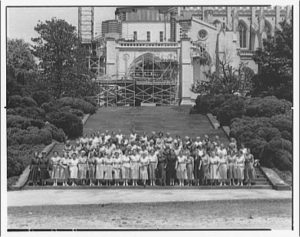The Establishment of the College of Agriculture & Farm
During the early 1900’s, a College of Agriculture, and a University Farm were included among the group of colleges collectively known as Syracuse University. The college was located in what is now known as Slocum Hall and the farm existed on the land that is presently South Campus. Although the discontinuance of the college and farm was made official in 1934, the expansion of knowledge, and experimental methods practiced on this and other college farms, helped to lay the foundation for many of today’s agricultural practices, thus making it worthy of historic note.
The History
Land Grant status, government subsidies, and the Morrill Act in 1862 were largely responsible for the establishment and growth of the majority of this nations agricultural school’s. Unable to obtain any of this government funding, then Chancellor James R. Day, in 1910, using his own personal funds, purchased a 100 acre tract of land to be used as the college farm, and thereby established a program for the study of agriculture on the S.U. campus. He received strong support from Dr. William L. Bray, the Chair of the Botany Department at that time, who was instrumental in the development of the entrance requirements, course guidelines, and the building of the academic structure needed for the running of such a college. Student enrollment in the first year numbered 35 but had grown to 100 students by the 1913-14 school year. By 1918 with both public interest and enrollment continuing to increase, the Joseph Slocum College of Agriculture building was erected with funds donated by Margaret Olivia Slocum Sage. She had donated $300,000 specifically for building of the college and the school was named in memory of Margaret’s late father Joseph. During the majority of its years, enrollment numbered between 100-150 students per year.
Historical Context & Cultural and Social Ideals
The emergence of the first agricultural colleges in the late 1800’s was not without controversy. There were as many detractors, surrounding the inclusion of a degree in agricultural studies at the college level, as there were supporters. Albert H. Leake states in his 1915 book The Means and Methods of Agricultural Education
“In view of the success of the colleges, it is interesting to read some of the early expressions used concerning them. The older colleges looked with considerable disfavor upon the intrusion of the institutions into what they considered their considerable domain. “A waste of public lands and private fortunes”; the dreams of amiable but visionary enthusiasts”; “another illustration of the folly of attempting to make a silk purse out of a sow’s ear”; and many others, were the expressions applied to them. In a report presented by the Commissioner of Labor in 1893, the agricultural colleges are called “half developed colleges of agriculture and mechanics.” He places them between the trade schools and the technical colleges of university grade, giving them a very indefinite and nondescript position. The attitude was, perhaps, not hostile to the colleges but at any rate it shows that they had not yet achieved a recognized position among the educational institutions of the country.”
The Harvester: J.S.C.A Yearbook
The College of Agriculture’s student body produced and published an annual yearbook known as The Harvester, the first copy of which was published in 1923. These publications contained articles that dealt directly with the day to day activities and functions of the university’s College and farm, as well as other informational articles on various agricultural related subjects. Topics included the benefits of different seed types, useful tools, farm equipment and animal husbandry and would have been of interest to anyone involved or interested in the many facets of agriculture and farming. The yearbook was also considered a “valuable educational tool for the students as they were not only responsible for its content, but the selling of the advertisement to support it as well further enhancing their communication skills.”
J.S.C.A. Song: Farmers song
I found this song in the filed box of documents located in the Syracuse University Archives. Although it was not authorized and i was unable to find out much more about it, it appears to be written by students of the Joseph Slocum College of Agriculture, and so I decided to include it here. This copy of the song was included on a one page document which contained several old S.U. school songs, including Syracuse Universities Alma Mater.
1 We are the Farmers, jolly old Farmers,
We are from J.S.C.A. as you all may know.
We know the horse and cow, we know how to milk and plow,
How the deuce did we find that out? Duck told us so.
2 We are Mechanics, greasy Mechanics,
We are from J.S.C.A. as you al may know.
We know all tractors and their internal factors,
How the deuce did we find that out? “ Sib” told us so.
3 We are the Herdsman, immaculate Herdsman
We are from J.S.C.A. as you all may know,
We know the Bacterio, we know what makes it grow,
How the deuce did we find that out? Harley told us so.
4 We are the Planters, scientific Planters,
We are from J.S.C.A. as you all may know.
We know good seeds from weeds, we know just what to feed,
How the deuce did we find that out? “Herb” told us so.
5 We are the Poultrymen, incubating Poultrymen,
We are from J.S.C.A. as you all may know.
We know the Rooster O, we know what makes him crow,
How the deuce did we find that out? Lin told us so.
6 We are the Gardeners, intensive Gardeners,
We are from J.S.C.A. as you all may know.
We know all diseases and slugs, we know the control of bugs,
How the deuce did we find that out? “Shorty” told us so.
7 We are the Aggies, all kinds of Aggies,
We are from J.S.C.A. as you all may know.
We’re always sure to know just how to make things grow,
How the deuce did we find that out? Dean told us so.
Closing:
The closing of the Joseph Slocum College of Agriculture was formally announced in a letter dated May 6th 1933 by Chancellor Charles W. Flint who had succeeded James R. Day. Formal education was continued for those currently enrolled and upon their graduation in 1934 the college officially closed its doors. The farm continued to operate on a limited basis until the land was needed for housing units built for the large influx of returning World War II veterans attending Syracuse University after the war.
During its 24 years of inhabitancy, the Joseph Slocum College of Agriculture remained the only agricultural college in country that was run completely without the benefit of state or federal funding. Competition from other colleges, declining enrollment, rising labor costs, and lack of financing ultimately led to the schools closing. The disparity and allocation of state funding for colleges of both forestry and agriculture in New York State have been widely referenced to and written about. The heated competition and dispute between Syracuse and Cornell Universities was especially contentious, and the animosity between Chancellors Bailey of Cornell and Day of Syracuse was plainly apparent. As Cornell’s College of Agriculture, funded by state money grew, attendance at Syracuse University’s agricultural school began to dwindle. In Chancellor Flints letter announcing the closing of the school he explains that
” The growing tendency in higher educational circles to avoid unnecessary duplication in specialized field, and the difficulty of financing the necessary curriculum for a limited enrollment have recently made acute the question of continuing this college in spite of its noble record of the past three years. While recognizing the significance of its work, the Board has not felt this to be sufficient to justify the duplicating in a considerable measure of the work of the State College of Agriculture at Cornell University”.
In the end there was somewhat of a compromise with Cornell closing it’s College of Forestry and Syracuse closing it’s College of Agriculture. Both went on to develop widely respected, highly successful colleges in their respective fields; Cornell University College of Agriculture and Life Sciences and Syracuse University College of Environmental Science and Forestry.
Citations
Works Cited
Bailey, L. H.. The training of farmers,. New York: Century, 1909. Print.
Bradley, Howard R.;The Harvester Dec. 1923
Flint, Charles W. “ Document announcing the discontinuation of the College of Agriculture;
Office of the Chancellor, SyracuseUniversity, 6 May 1933
Images; n.d. The Harvester; SyracuseUniversity Archives Dec. 1923; 30
Leake, Albert H.. The means and methods of agricultural education,. Boston: Houghton Mifflin Co., 1915. Print.
Leavitt, Frank Mitchell. Examples of industrial education,. Boston: Ginn and company, 1912. Print.
Nye Reuben L.; What College?
The Harvester Dec. 1923; 5
SyracuseUniversityBuildings; University Farm, 2010 Web. 1 April 2013
Links

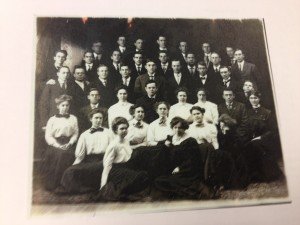 . The associations focus was to promote an interest in broad political and economic reforms; the most vital one of the focus was an elimination of “the evils of liquor”
. The associations focus was to promote an interest in broad political and economic reforms; the most vital one of the focus was an elimination of “the evils of liquor” 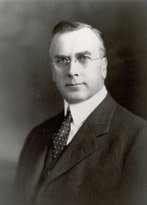 . He was known for several issues including defending prohibition
. He was known for several issues including defending prohibition 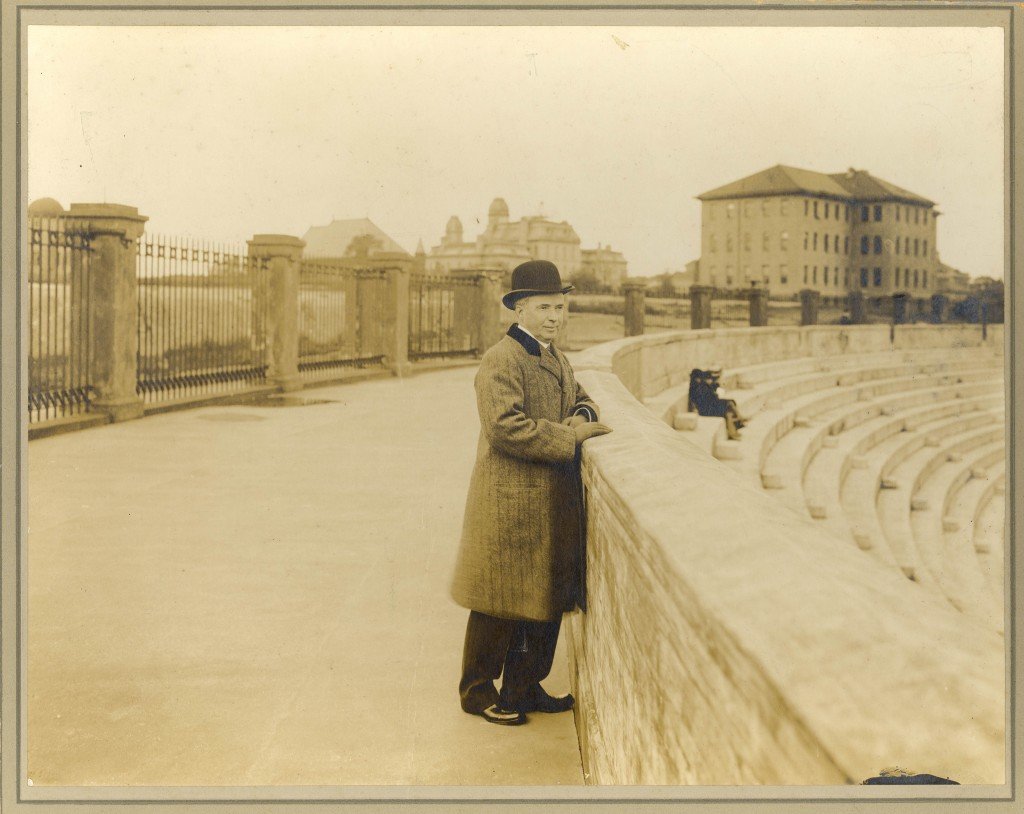
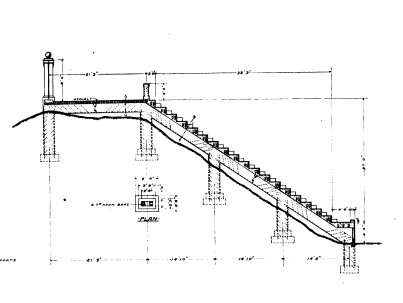
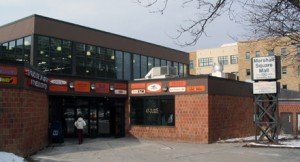
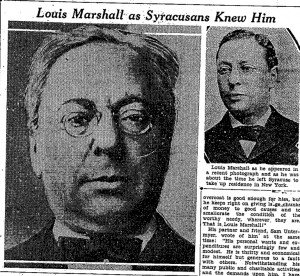
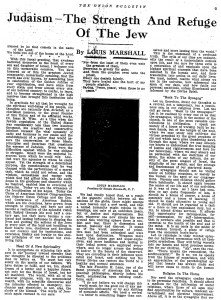 As Marshall’s death approached, he was also beginning to lose the battle at Syracuse.
As Marshall’s death approached, he was also beginning to lose the battle at Syracuse.